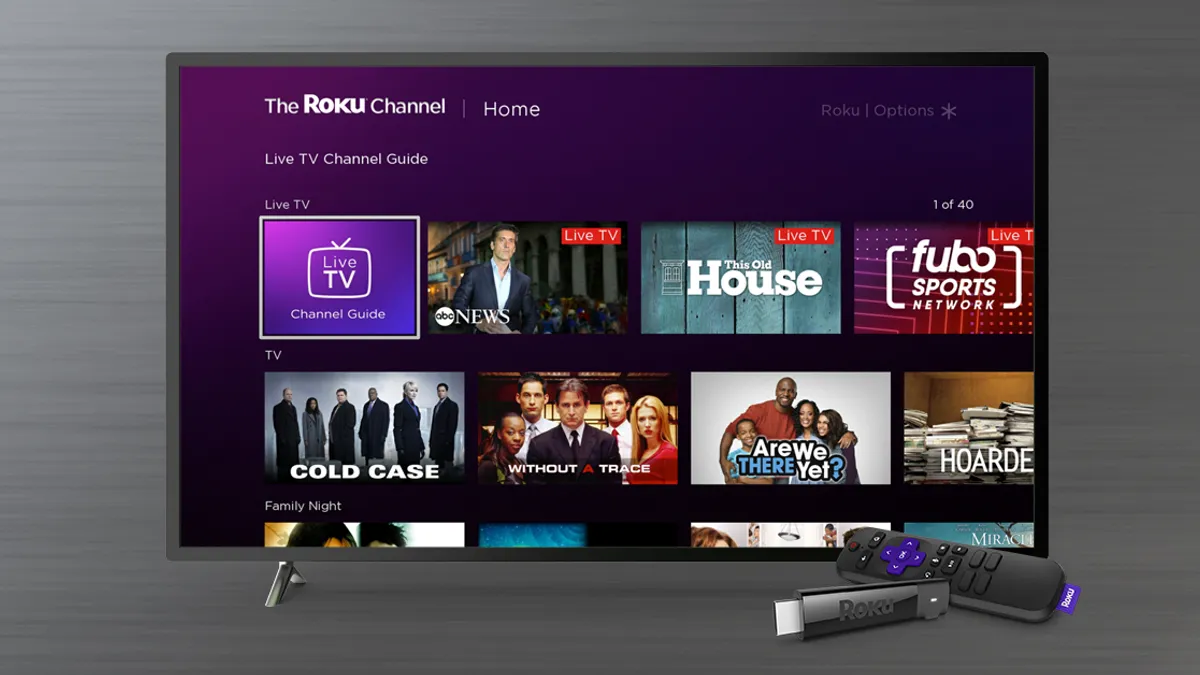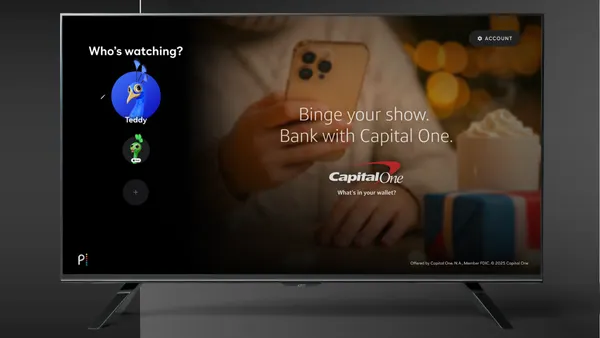Dive Brief:
- Roku's fourth-quarter revenue jumped 58% from a year earlier to $649.9 million as the streaming-media platform's audience continued to grow while the pandemic kept people stuck at home. Revenue for its platform business that includes advertising sales surged 82% to $471.2 million, per a quarterly earnings report.
- To reach holiday shoppers, retailers more than doubled their advertising spend on Roku during the period. Those retailers included Walmart, which ran targeted video ads and an interactive sweepstakes on the Roku TV home screen. Among viewers who saw a Roku ad for Walmart, 80% had not seen a Walmart ad on traditional TV, and brand favorability rose 65% among adults 18 to 34, according to Roku.
- Ad spending through Roku's demand-side platform (DSP), which the company rebranded as the "OneView Ad Platform," also grew rapidly in the quarter. Spending on over-the-top (OTT) impressions through OneView more than doubled, while spending on impressions delivered on the Roku platform in OneView more than quadrupled in 2020, suggesting a continued growth area for Roku in the new year.
Dive Insight:
Roku's impressive results indicate that marketers — especially retailers — boosted their spending to reach the growing number of consumers who have a Roku smart TV or video streaming player that's connected directly to the internet. Roku's active users streamed an average of 3.8 hours a day, up 10% from a year earlier, while its average revenue per user jumped 24% to $28.76 in the quarter. Amid the cord-cutting trend, Roku's active accounts jumped 39% from a year earlier to 51.2 million by the end of 2020, giving the company greater scale to attract media spending from mass marketers.
The company touted its strength compared to linear TV, whose scheduling was negatively affected by the pandemic-spurred loss of some live events including sports programming and which has an aging demographic. The median age for viewers of the three major broadcast networks is over 60 years old, partly because younger viewers are opting for streaming services. Upfront ad costs rose 13% for linear TV, while household ratings dropped 21% from a year earlier, according to data cited by Roku.
The company forecast that ad spending on the platform will continue to grow following the strength in Q4, when "the six largest agency holding companies more than doubled their investment with Roku on a year-over-year basis, while also committing to significantly larger 2021 upfronts with Roku." Roku estimated total revenue will grow 51% from a year earlier to $485 million during the current quarter, but didn't provide a full-year forecast because of pandemic uncertainties.
While Roku provides a platform for viewers to run apps from streaming services like Netflix, Disney+, Peacock and HBO Max, it also is expanding ad sales and programming for the Roku Channel, its hub for free and premium news and entertainment. The company last month agreed to buy the rights to content from Quibi, giving the maker of popular streaming-media devices a library of original shows from the short-lived mobile video service that launched and shuttered in 2020. The original programming can help distinguish the Roku Channel from rival streaming services, giving consumers another reason to sign up for its service. As more people register for Roku, marketers will likely ramp up their spending on the platform.













